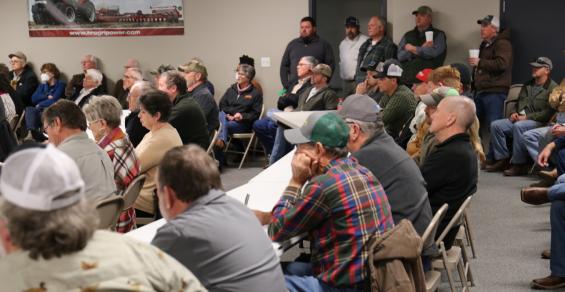Job creation and economic revitalization are wonderful, but what impact will this development have on the region’s agricultural production?
They expected 50 people. Close to 200 showed up.
When I entered the conference room of H & R Agri-Power in Brownsvile, Tenn., there was not a chair to be had, or even really a spot to stand. Farmers, agricultural leaders and stakeholders had turned out in droves for the Blue Oval City Development meeting sponsored by Tennessee Farm Bureau.
Blue Oval City is Ford Motor Company’s new 3,600-acre mega campus in nearby Stanton, Tenn. In September, the car maker announced the acquisition of the property where they plan to manufacture electric F-series trucks beginning in 2025. Korean firm SK Innovation will also have a complex within the Blue Oval City limits where they will produce the advanced lithium-ion batteries used to power the electric trucks.
Ford said its Blue Oval City investment will bring close to 6,000 jobs to Stanton within the first 10 years. Meanwhile, as ground breaks on the facility this spring, as many as 4,000 construction workers will be needed this year alone. Considering the entire population of Haywood County is less than 18,000, it’s hard to fathom the impact Blue Oval City will have in this region.
There’s something else to know about Blue Oval City. It occupies a large footprint in the heart of Tennessee’s row crop production area. Haywood County produces more cotton than any other county in the state and is near the top of the list for soybeans and corn.
Job creation and economic revitalization are wonderful, but how good is this development for the region’s agricultural production? That explains the large turnout for the development meeting as farmers hoped to have their questions answered. For example, where exactly will Ford find the 4,000 workers to begin moving 15 million yards of dirt? Those jobs will require experience with machinery and heavy equipment. Farmers already struggling to fill labor needs will see additional competition.
Speculators have descended upon the region driving up property values. A story was shared of a landowner turning down $45,000 an acre for a 175-acre tract. We all know how numbers tend to grow in these stories, but judging by the reactions from the audience, he wasn’t far off the mark. Can farming continue to compete for land use? Will Ford’s claims that the new plant will be carbon neutral, powered by local renewable energy, mean more cropland converted to solar farms?
High property values do not seem like a bad problem to have, but what about property taxes? And will rates have to be significantly increased to finance the new schools, roads, and other infrastructure needed as the population explodes? For you Yellowstone fans, will landowners find themselves in a real-life John Dutton situation?
The meeting was informative, but I don’t think it addressed farmer concerns in a meaningful way. Now, more wait and see are in store.





